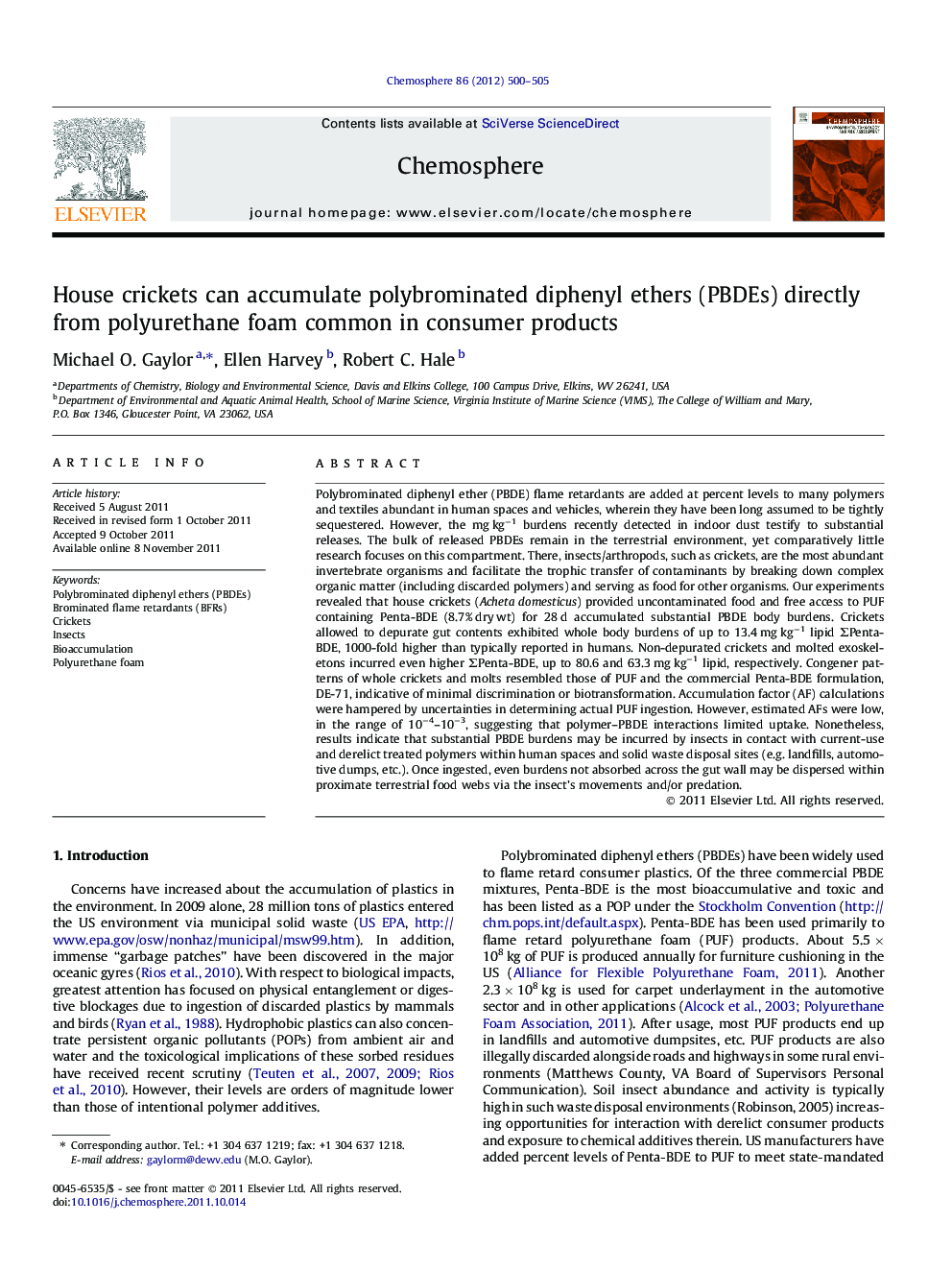| کد مقاله | کد نشریه | سال انتشار | مقاله انگلیسی | نسخه تمام متن |
|---|---|---|---|---|
| 4410510 | 1307549 | 2012 | 6 صفحه PDF | دانلود رایگان |

Polybrominated diphenyl ether (PBDE) flame retardants are added at percent levels to many polymers and textiles abundant in human spaces and vehicles, wherein they have been long assumed to be tightly sequestered. However, the mg kg−1 burdens recently detected in indoor dust testify to substantial releases. The bulk of released PBDEs remain in the terrestrial environment, yet comparatively little research focuses on this compartment. There, insects/arthropods, such as crickets, are the most abundant invertebrate organisms and facilitate the trophic transfer of contaminants by breaking down complex organic matter (including discarded polymers) and serving as food for other organisms. Our experiments revealed that house crickets (Acheta domesticus) provided uncontaminated food and free access to PUF containing Penta-BDE (8.7% dry wt) for 28 d accumulated substantial PBDE body burdens. Crickets allowed to depurate gut contents exhibited whole body burdens of up to 13.4 mg kg−1 lipid ΣPenta-BDE, 1000-fold higher than typically reported in humans. Non-depurated crickets and molted exoskeletons incurred even higher ΣPenta-BDE, up to 80.6 and 63.3 mg kg−1 lipid, respectively. Congener patterns of whole crickets and molts resembled those of PUF and the commercial Penta-BDE formulation, DE-71, indicative of minimal discrimination or biotransformation. Accumulation factor (AF) calculations were hampered by uncertainties in determining actual PUF ingestion. However, estimated AFs were low, in the range of 10−4–10−3, suggesting that polymer–PBDE interactions limited uptake. Nonetheless, results indicate that substantial PBDE burdens may be incurred by insects in contact with current-use and derelict treated polymers within human spaces and solid waste disposal sites (e.g. landfills, automotive dumps, etc.). Once ingested, even burdens not absorbed across the gut wall may be dispersed within proximate terrestrial food webs via the insect’s movements and/or predation.
► We examine PBDE accumulation by house crickets exposed to polyurethane foam (PUF).
► PUF-exposed crickets ingested treated PUF and accumulated mg kg−1 PBDE body burdens.
► Accumulation factors were low suggesting PUF–PBDE interactions might slow uptake.
► PBDE burdens in shed cricket molts were 4-fold higher than whole body burdens.
► Soil insects exposed to treated polymers may be important PBDE vectors.
Journal: Chemosphere - Volume 86, Issue 5, February 2012, Pages 500–505